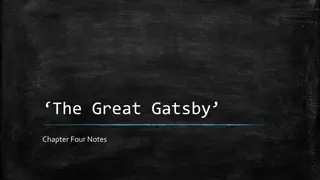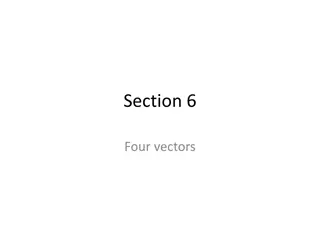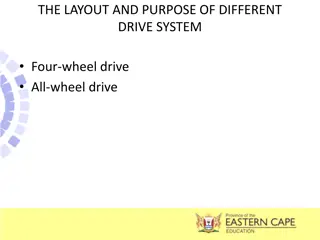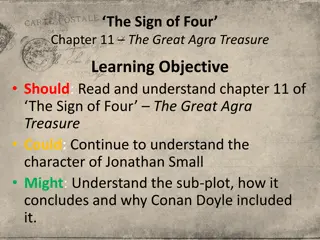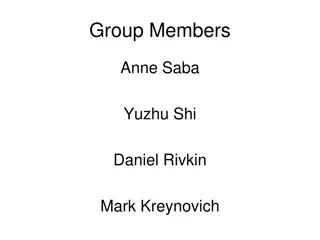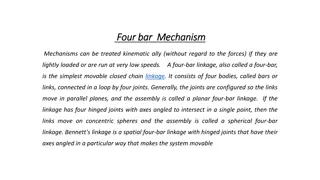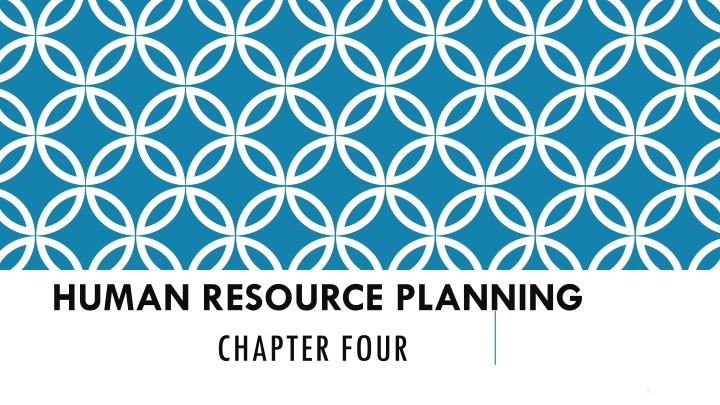
Human Resource Planning: Definition, Importance, and Strategic Approaches
Learn about the importance of human resource planning (HRP) in ensuring the availability of the right employees with the right skills at the right time. Explore the differences between hard and soft HRP, and understand how strategic HRP contributes to achieving organizational goals efficiently.
Download Presentation

Please find below an Image/Link to download the presentation.
The content on the website is provided AS IS for your information and personal use only. It may not be sold, licensed, or shared on other websites without obtaining consent from the author. If you encounter any issues during the download, it is possible that the publisher has removed the file from their server.
You are allowed to download the files provided on this website for personal or commercial use, subject to the condition that they are used lawfully. All files are the property of their respective owners.
The content on the website is provided AS IS for your information and personal use only. It may not be sold, licensed, or shared on other websites without obtaining consent from the author.
E N D
Presentation Transcript
HUMAN RESOURCE PLANNING CHAPTER FOUR 1
HUMAN RESOURCE PLANNING Definition HRP is the process of reviewing HR requirement to ensure that the required number and type of employees are available when they are needed. HRP is the process of analyzing an organization s human resource needs and developing plans, policies, and systems to satisfy those needs. HRP is the process of anticipating and providing for the movement of people into, within, and out of an organization. 2
HUMAN RESOURCE PLANNING Definition of HRP HRP is a process used to determine what and how many position have the firm to fill and how to fill them HRP is an activity that managers engage in to forecasting their current and future needs of human resources. 3
HARD AND SOFT HUMAN RESOURCE PLANNING Hard Human resource planning is based on quantitative analysis in order to ensure that the right number of the right sort of people are available when needed. Soft human resource planning is concerned with ensuring the availability of people with the right type of attitudes and motivation who are committed to the organization and engaged in their work, and behave accordingly.
IMPORTANCE OF HUMAN RESOURCE PLANNING ensure the organization has the right number of human resources, with the right capabilities, at the right times in the right places anticipate the problems of potential surpluses or deficits of people Help managers to predicate future net human resource requirements of the organization Serves as a base for the performance of other HRM functions
IMPORTANCE OF HUMAN RESOURCE PLANNING help managers deploy their human resources as effectively as possible, where and when they are needed, to accomplish the organization s goals. reduces dependence on external recruitment when key skills are in short supply by formulating retention, as well as employee development strategies
STRATEGIC HUMAN RESOURCE PLANNING What is strategy? Strategy is derived from the Greek word strategia which connotes the art & science of directing military forces (Around 400 BC) meaning the art of being a general or the art of the general , In this context, strategy refers to an important plan to deploy the available resources in a manner to defeat the enemy
STRATEGIC HUMAN RESOURCE PLANNING What is strategy? Strategy is a tool to organize & allocate an organization s resources in a viable way based on its internal competencies , shortcomings and anticipated changes in the environment. Strategy is the use of entity s resources in the pursuit of its objectives against competition from rival organizations.
STRATEGIC PLANNING Strategic planning involves a set of procedures for making decisions about the organization s long-term goals and strategies. It focus on how the organization will position itself relative to its competitors in order to ensure its long-term survival, create value, and grow. Strategic planning is the process of defining an organizational strategy, or direction, and making decisions on allocating the resources of the organization to pursue this strategy.
HIGHLIGHT OF STRATEGIC PLANNING Direction/Objective Setting Process Strategy Formulation Internal Analysis Mission Strategy Identification & Selection Objective Setting Vision External Analysis 10
STRATEGIC PLANNING AND HR PLANNING Human resources planning relates to strategic planning into fundamental level: strategy formulation and strategy implementation. Human resources planning provides a set of inputs into the strategy formulationprocess in terms of what is possible, that is, whether a firm has the types and numbers of people available to pursue a given strategy.
STRATEGIC PLANNING AND HR PLANNING In addition to strategy formulation, HRP is important in terms of strategy implementation. Once the firm has devised its strategy, the HRM function must do its part to ensure the strategy s success, thereby helping the organization to achieve its objectives.
OPTIONS TO ALIGN HR STRATEGY WITH BUSINESS STRATEGIC PLAN Aligning HR strategy with business strategy can be done in one of the following ways: Start with organizational strategy and then create HR strategy Start with HR competencies and then craft corporate strategies based on these competencies Do a combination of both
CHARACTERISTICS OF HUMAN RESOURCE PLANNING Guide and coordinate all human resource management activities Proactive Responsive for changes in the internal and external environment Linked with high level of organizational plan instead of being performed in isolation 14
HUMAN RESOURCE PLANNING PROCESS 1. Capturing underlying business philosophy and focus of the strategic plan of the organization 2. Preparing human resource inventory of the company s current human resources that consists of up-to-date information concerning each employees knowledge, skills and experience, age
HUMAN RESOURCE PLANNING PROCESS 3. Scenario Planning-an assessment of the environmental changes that are likely to affect the organization so that a prediction can be made of the possible situations that may have to be dealt with in the future.
HUMAN RESOURCE PLANNING PROCESS 4. Forecasting future people needs (demand forecasting)- determine the type and number of human resource required in the future 5. Forecasting human resource supply: require anticipation of supply of people who will be available in the future from within the organization and in the external labor market
HUMAN RESOURCE PLANNING PROCESS 6. Comparing forecasts of demand and internal supply Surplus= HR demand < HR supply Shortage= HR demand > HR supply Balanced= HR demand = HR supply
HUMAN RESOURCE PLANNING PROCESS 7. Drawing up plans to match supply to demand a. If surplus is projected, plan must be made to: encourage early retirement Reduce working hour Restrict hiring Promotion Training and development transfer lay off
HUMAN RESOURCE PLANNING PROCESS 7. Drawing up plans to match supply to demand b. If shortage is projected, plan must be done to: Allow overtime work/part time To extend retirement Introduce labor saving technology Job enrichment/enlargement Recruit and select employees
HUMAN RESOURCE PLANNING PROCESS 8. Implement the action plan 9. Monitoring and evaluation
RECAP QUESTIONS 1. What is HRP? What do you think is the importance of for an organization? 2. What are the basic steps of developing HRP (you can take your prior experience, if any)? 3. As a manager what action will you take if you face surplus of human resources? 22
HUMAN RESOURCE PLANNING PROCESS MODEL EXTERNAL ENVIRONMENT INTERNAL ENVIRONMENT Strategic Planning Human Resource Planning Forecasting Human Resource Requirements Determine Human Resource Supply Comparing Requirements and supply Demand = Supply Surplus of Workers Shortage of Workers Take action Take action No Action
HUMAN RESOURCE PLANNING(HRP) Human resource planning translates the organization s overall goal into the number and types of workers needed to meet those goals. focus on answering how the organization intend to use its HR to achieve business strategy e.g. If an organization is pursuing a diversification strategy the HRP should focus on developing new organizational structure, recruitment and selection, training etc.
FORECASTING: A CRITICAL ELEMENT OF PLANNING Human resource forecasting includes anticipating future human resource demand (requirement) and supply (availability). Managers must continually forecast both the needs and the capabilities of the firm for the future in order to do an effective job. Can be defined as ascertaining the net requirement for personnel by determining the demand for and supply of human resources now and in the future. Poor forecasting will lead to unfilled job vacancies that lead to lost efficiency and unnecessary layoffs.
DEMAND FORECASTING Demand forecasting answers how many people need to be working and in what jobs to implement organizational strategies and attain organizational objectives. is the process of estimating the future numbers of people required and the likely competences they will need.
APPROACHES TO DEMAND FORECASTING Trend analysis - predicts the demand for labor based on projections of past relationship patterns over a number of years. Identify business factor e.g., sales volume Plot a historical trend of the business factor- e.g., overall sales volume for the last five years
APPROACHES TO DEMAND FORECASTING Compute the productivity ratio for at least the past five years. e.g., sales/employee Calculate human resources demand by dividing the business factor by the productivity ratio Project the firm s human resources demand out to the target year.
APPROACHES TO DEMAND FORECASTING Key predictive factors Identifying one major variable with which total human resource is highly correlated e.g. using number of patients as key predictive factor to determine number of doctors 30
APPROACHES TO DEMAND FORECASTING Management forecasting/expert judgment are the opinions (judgments) of supervisors, department managers or experts, who are very familiar with the entire nature of the jobs in the organization.
APPROACHES TO DEMAND FORECASTING Zero based forecasting Using current level of employees as a starting point to determine future staffing needs Whenever vacancies exist due to retirement, layoff, death, or resignation, the vacant the position is not automatically filled. analysis determines whether the firm can justify filling it.
APPROACHES TO DEMAND FORECASTING Bottom up approach In the bottom-up forecast, each successive level in the organization, starting with the lowest, forecasts its requirements to provide an aggregate forecast of employees needed. This process is highly interactive as the estimated requirements from the previous level are discussed, negotiated, and re-estimated with the next level of management.
APPROACHES TO DEMAND FORECASTING work standard data This is a means of determining the relationship between tasks and the number of employees needed to perform the tasks. Activities Estimate activity time (1) Total time required to complete the activity (1 2) Total time required to complete the job / standard working hr = HR requirement Frequency (2) The technique is useful only in cases where the volume of work can be satisfactorily quantified.
FORECASTING HUMAN RESOURCE SUPPLY Supply forecasting estimates future sources of human resources that are likely to be available from inside and outside the organization. supply options are two internal and external supply. 35
FORECASTING HUMAN RESOURCE SUPPLY Internal supply- which refers to current members of the organizational workforce who can be retrained, promoted, transferred, etc., to fill anticipated future HR requirements. The major tool used to assess the current supply of employees is skills inventory. Purpose: to note what kind of skills, abilities, experiences, and training the employees currently have.
COMPONENTS OF SKILLS INVENTORY Content of skills inventory can be put into three components as follows: 1. Data summarizing the employees past 2. Data summarizing status of present skills 3. Data that focus on the future
DATA SUMMARIZING THE EMPLOYEES PAST Title and brief job description highlighting positions held over the years either in the organization or previous organizations skills developed in these positions Educational achievements significant accomplishments
DATA SUMMARIZING THE STATUS OF THE PRESENT SKILLS Skill related highlights last three performance appraisals Employee perception of his/her competencies Employees supervisor perception of employees competencies
DATA THAT FOCUS ON THE FUTURE Personal career goals identify specific positions and aspiration, one year, three years. View of the individuals present supervisors as to what he or she could be prepared to become. Specify training and development efforts that the individual is motivated to undertake on the job, off the job, classroom or experiential
FORECASTING HUMAN RESOURCE SUPPLY External supply- which refers to potential employees who are currently undergoing training or working for competitors, or currently are in a transitional stage, between jobs, self employed or unemployed. 41
APPROACHES TO SUPPLY FORECASTING Supply forecasting process involves both tracking current employee levels and making future projections about those levels. Staffing tables are graphic representations of all organizational jobs, along with the numbers of employees currently occupying those jobs
APPROACHES TO SUPPLY FORECASTING Markov analysis- shows the percentage (and actual number) of employees who remain in each of a firm s jobs from one year to the next, as well as the proportions of those who are promoted, demoted, or transferred, or who exit the organization.
FORECASTING HUMAN RESOURCE SUPPLY quality of fill - a metric designed to measure how well new hires that fill positions are performing on the job. Replacement charts- Listings of current jobholders and people who are potential replacements if an opening occurs.
FORECASTING HUMAN RESOURCE SUPPLY Succession planning- the process of identifying, developing, and tracking key individuals for executive positions.
FACTORS TO CONSIDER IN SUPPLY FORECASTING Turnover - The analysis of the numbers of people leaving the organization provides data for use in supply forecasting, so that calculations can be made on the number of people lost who may have to be replaced. Number of leavers in a specified period (usually 1 year) * 100 Average number of employees during the same period
FACTORS TO CONSIDER IN SUPPLY FORECASTING survival rate- the proportion of employees engaged within a certain period who remain with the organization after so many months or years of service.
FACTORS TO CONSIDER IN SUPPLY FORECASTING Stability index - provides an indication of the tendency for longer service employees to remain with the company, and therefore shows the degree to which there is continuity of employment. Number with 1 year s service or more * 100 Number employed 1 year ago
READING ASSIGNMENT Read about recruitment and selection






